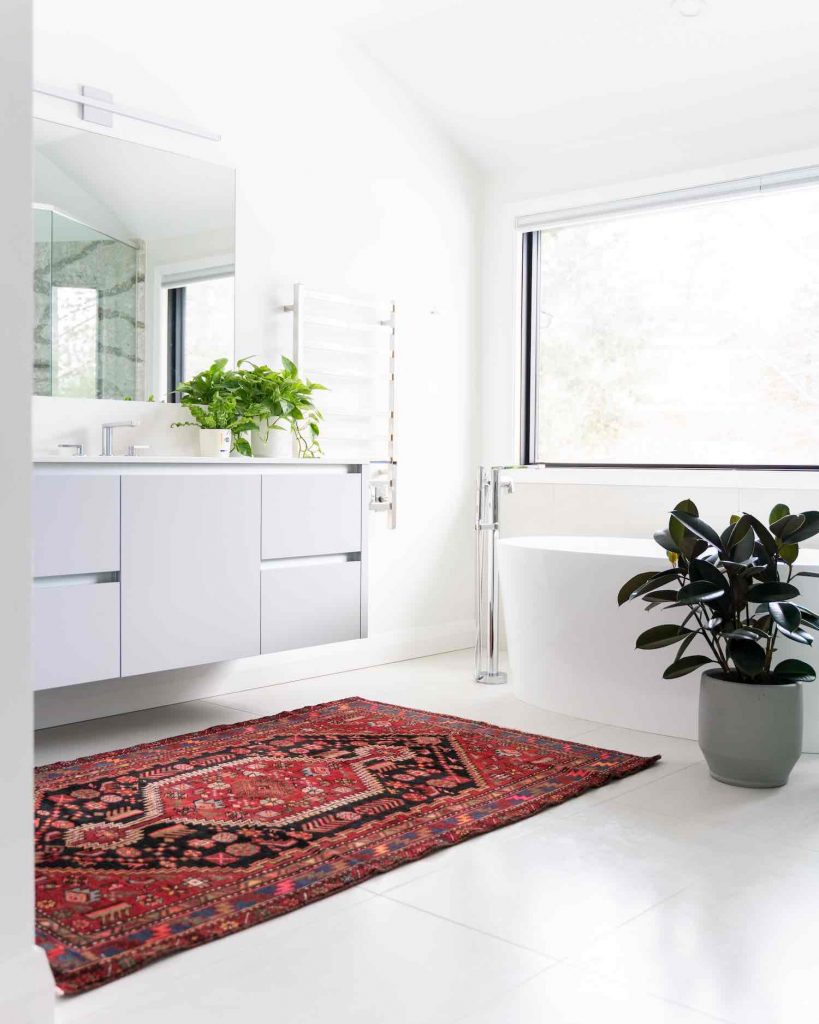Types of Bathroom Cabinets
Types of Bathroom Cabinets
Bathroom cabinets are essential to storage and organisation in a bathroom and they often serve as the support for the bathroom sink. Vanity cabinets do just this, and often provide two or three drawers and a cupboard for under-sink storage. They may be capped with almost any countertop material from laminate to stone. Tall cabinets and wall cabinets, built just like their kitchen counterparts, can provide generous storage for linens and more.
When building a new bathroom or giving an existing bathroom a facelift, it pays to give special attention to the cabinets as early as possible because they often set the stage for the rest of the room’s design and, in many cases, they may take longer to get than other components.
When you begin to shop, you’ll find almost endless possibilities, from custom-made, elegant hardwood masterpieces to low-priced bargains that you can buy at the home improvement centre and install in a day. And you’ll find that almost any style and size is possible. Frameless cabinet features hidden hinges, maximum storage. Face-frame cabinets are more rigid and affordable to build. Here are the types of bathroom cabinets….
Face-frame Bathroom Cabinets
As the name implies, a face-frame cabinet has a frame made from 1-by-2 hardwood on the front of the 3/4-inch plywood or particle board cabinet box. The frame makes the cabinet rigid and provides a strong base for hinges. Doors or draw fronts typically overlay the frame, but they may be flush or offset. On face-frame cabinets, standard offset hinges are partially visible from the front. Because of the added rigidity from the frame, these cabinets don’t have a top panel, and they have only a partial back or a back made of thin material. They have integral bases. The frame can be shaved to fit an irregular wall and makes it possible to use affordable, low-quality materials for cabinet sides. The face frame narrows the opening size for doors and drawers.
Frameless Bathroom Cabinets
Frameless European-style cabinets are constructed like boxes, from panels finished on both sides and edged with a simple laminate banding or narrow strip. Most types have holes drilled at 32-mm increments vertically along each cabinet side panel; these may be fitted with European hinges, cabinet joinery fittings, drawer slides, shelf pins, and other hardware.
European-style frameless bath cabinets have flush doors with hidden hinges. Though most stand on the floor, this cabinet is wall-mounted. Most frameless cabinets have flush doors and hidden hinges. Frameless cabinets usually have a solid top and back and base units and are commonly mounted on top of a separate plinth or toe-kick.
Wall Mounted Bathroom Cabinets
If you have a small bathroom, a wall mounted cabinet will maximise space and keep the floor area clear. Bathroom wall cabinets come in various designs including tall cupboards, mirrored cabinets and wall cupboards with glass or wooden doors.
Mirrored Bathroom Cabinets
Combine storage and a mirror into one unit and are a popular choice for modern bathrooms and en-suites. They come in various sizes and styles, and some incorporate energy saving LED lights, touch sensors and shaving sockets, offering both an aesthetically pleasing and practical storage solution. A mirror cabinet that’s positioned high up on the wall ensures that medicines are kept out of arm reach from young children.
Tall bathroom cabinets are typically divided into two separate compartments and incorporate plenty of space for spare towels, toilet roll and toiletries. There’s a couple of shelves in each cupboard so you can keep everything neat and organised.
Freestanding Bathroom Cabinets
Freestanding cabinets are available in modern and traditional styles, as well as tall and slimline designs. Freestanding cabinets generally look like a piece of furniture. They can easily be positioned anywhere in your bathroom, offering more flexibility over wall mounted bathroom cabinets. A freestanding cabinet is also easier to install than a wall hung design, plus the wall needs to be able to take the weight of a cabinet and its contents; something else you may want to bear in mind. These have grown increasingly popular over recent years as bathrooms have taken on the look of living spaces.
Freestanding console cabinets usually have legs, giving them a less bulky feel than conventional cabinetry. Their openness works well in minimal-space bathrooms. Many have shelves, doors and drawers, though the plumbing beneath the sink interrupts the full use of drawers and shelves, so false fronts are typically used for some drawers or cabinets.
Cabinets for Small Bathrooms
Corner cabinets and recessed cabinets are also ideal for small bathrooms. A corner cabinet fits snugly into the corner of a bathroom and makes use of what could otherwise be wasted space. A recessed cabinet is fitted into the wall, creating a sleek and streamlined look. If a corner or recessed cabinet is not an option, then look out for slimline bathroom cabinets, which are narrow in width to save space.

